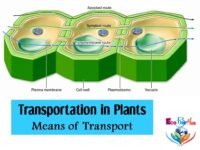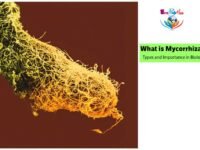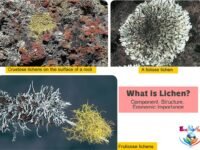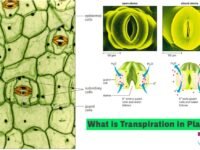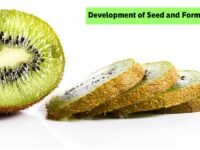In this tutorial, we have discussed different types of fruits in biology and their significance.
TABLE OF CONTENTS
WHAT ARE FRUITS
— True fruit or eucarp is a ripened ovary which develops under the influence of ripening ovules and is meant for protecting them. It consists of a pericarp formed from the wall of the ovary and seeds formed from ovules.
The pericarp may be dry or fleshy, when fleshy it consists of the outer (epicarp), middle (mesocarp), and inner (endocarp) walls.
A fruit in which other floral parts (e.g., thalamus, base of sepals, petals, etc.) fuse with the pericarp is called false fruit or accessory fruit or pseudocarp (e.g., Apple, Mulberry, Strawberry).
The fruits, which develop only from the ovary, are called true fruits.
Pomology is the study of fruits.
A fruit that is formed without fertilization and thus without seed is called seedless fruit or parthenocarpic fruit, e.g., banana.
Broadly, fruits are divided into three groups-simple (formed from a flower having a single pistil), aggregate (from a flower having polycarpellary apocarpous gynaecium),- and composite (from a whole inflorescence).
► Read More: Development of Seed and Formation of Fruit ► Read More: Why Seed Dispersal is important? Agents of Seed Dispersal ► Read More: What is Pollination? Definition, Types, Agents, Significance ► Read More: Reproduction in Plants : Sexual and Asexual reproduction ► Read More: Stem Anatomy || Monocot and Dicot Stem Cross Section || ► Read More: Inflorescence Types || Racemose, Cymose, Mixed, Specialized
Fruits are of three main types: Simple fruits, aggregate fruits, and multiple fruits. Simple fruits develop from the monocarpellary ovary or multicarpellary syncarpous ovary of a flower. Simple fruits are of two types: Simple dry fruits and Simple succulent (fleshy) fruits. In dry fruits, pericarp is dry. It is neither fleshy nor differentiated into three layers as in succulent fruits. Simple dry fruits are further divided into three types: (a) Achenial or Indehiscent (b) Capsular or Dehiscent and (c) Schizocarpic or splitting. These are single-seeded, dry simple fruits that do not dehisce or rupture after ripening and remain inside the pericarp. These are of following five types: It is a small dry, one chambered, one seeded fruit developing from superior or inferior monocarpellary unilocular ovary. The thin dry pericarp is free from the seed coat except at one point, e.g., Mirabilis jalapa (Four o’clock), Boerhaavia, etc. Sometimes achenes occur in a group from apocarpous ovary where carpels are many e.g., Lotus (Nelumbium). These are common in aggregate fruits, e.g., Ranunculus, Clematis, etc. It is very small, dry and one seeded fruit that develops from monocarpellary, unilocular, superior ovary. The thin dry pericarp is completely fused with seed coat or testa. It is characteristic of family graminea, e.g., rice (Oryza sativa), wheat (Triticum aestivum), maize, oat, etc. It is dry, one seeded fruit that develops from an inferior, bicarpellary, unilocular ovary. Here the pericarp is free from the seed coat but the thalamus is fused with that forming a part of the fruit i.e., in Compositae, e.g., sunflower, marigold, cosmos, etc. Pappus or persistent calyx is present in fruits. Some cypselas develop hairy pappus for seed dispersal by wind, e.g., Sunflower, Marigold, Sonchus, Dandelion (Taraxacum), etc.TYPES OF FRUITS
I. Simple Fruits
A. Simple Dry Fruits
1. Achenial / Indehiscent Fruits
(i) Achene
(ii) Caryopsis
(iii) Cypsela
(iv) Nut
It is dry, one seeded fruit that develops from a bicarpellary or multicarpellary, inferior ovary. Only a single ovule reaches maturity to form a single seed. The single-seeded, dry indehiscent fruit is hard, stony, woody, or leathery, e.g., Cashewnut (Anacardium occidentale), Betel nut (Areca catechu), Water chestnut (Trapa), Oak, Litchi, Walnut (Juglans), etc.
(v) Samara
It is dry, one or two seeded fruit, develops from a superior mono or bicarpellary ovary. The pericarp is free from testa and produces a wing like outgrowth that helps in wind dispersal of seeds. Examples: Holoptelia integrifolia (Indian Elm), Ulmus (Elm). In Shorea (Sal) persistent sepals form wings, Such fruits are called samaroids.
TABLE: Differences between Caryopsis and Cypsela Examples: Cereals (poaceae or gramineae) Examples: Sunflower, Sonchus (asteraceae or compositae)
Sl. No.
Caryopsis
Cypsella
01.
It is a true fruit.
It is a false, accessory or pseudocarpic fruit.
02.
It develops from a monocarpellary, superior ovary.
It develops from bicarpellary, interior ovary.
03.
Thalamus is not fused with the pericarp.
Thalamus is completely covered and is fused with the pericarp.
04.
Fruit wall is completely fused with seed coat.
Fruit wall is attached to seed coat at one point only.
05.
Pappus is absent.
Pappus may be present.
TABLE Comparison between Caryopsis, Achene, and Cypsela
Sl. No.
Caryopsis
Achene
Cypsella
01.
It is a small one-seeded fruit
It is a dry one-chambered and one-seeded fruit.
It is a dry, one-chambered fruit
02.
It develops from a monocarpellary, superior ovary.
It develops from a monocarpellary, superior or inferior ovary.
It develops from a bicarpellary, syncarpous, or inferior ovary.
03.
Pericarp remains fused with the seed coat.
Pericarp is free from the seed coat.
Pericarp is free from the seed coat.
04.
Pappus is absent.
Pappus is absent.
Pappus is present.
05.
It does not occur in groups.
It occurs in groups.
It does not occur in groups.
06.
Examples: Maize, Wheat, Rice
Examples: Clematis
Examples: Sunflower, Tagetes
2. Capsular / Dehiscent Fruits
These are many-seeded, dry, simple, and dehiscent fruits. Their pericarp ruptures after ripening and seeds are dispersed. These are of five types:
(i) Legume or Pod
It develops from monocarpellary, unilocular, superior ovary with marginal placentation. Mature fruit dehisces by both dorsal and ventral sutures. It is a characteristic of family leguminosae, e.g., Pea, Gram, Bean, Abrus, etc.
(ii) Follicle
It is similar to legume but dehisces by one suture only, generally ventral. Examples: Larkspur, Calotropis, Milkweed, etc.
(iii) Siliqua
This fruit develops from bicarpellary, syncarpous, superior ovary with parietal placentation, Ovary is unilocular in the beginning but becomes bilocular due to the development of false septum called replum. Dehiscence starts from the lower part (base) and proceeds upwards (apex) by both the sutures. Seeds are dispersed by wind. It is a characteristic of family cruciferae, e.g., Mustard (Brassica).
(iv) Silicula
It is a few-seeded, flattened, and shortened siliqua. Examples: Capsella (Shepherd’s Purse), Iberis (Candytuft), etc.
(v) Capsule
It develops from multicarpellary, syncarpous, superior, or inferior ovary. It is multilocular and many seeded. The important types of capsules are as follows:
(a) Loculicidal Capsule
The fruit dehisces along the dorsal sutures of the ovary by longitudinal slits into loculi, e.g., Cotton (Gossypium herbarium), Lady’s finger (Okra; Abelmoschus esculentus), etc.
(b) Septifragal Capsule
Lines of dehiscence along irregular lines, but the seeds remain attached to the placenta as in thorn apple (Datura stramonium).
(c) Porocidal Capsule
The capsule dehisces by pores as in Poppy, Luffa, and Dog Flower. In Poppy, the fruit has a persistent stigmatic disc.
(d) Pyxidium or Pyxis
A transverse circular suture separates the lid from the fruit to expose the seeds, e.g., Portulaca, Celosia (cock’s comb), etc.
(e) Denticulate or Denticidal Capsule
The mature capsule breaks apically in teeth-like projections, e.g., Dianthus (Pink).
(f) Septicidal Capsule
Longitudinal slits appear along the middle of the septa and the placentae along the line of union, e.g., Viola (Pansy), Linum (Linseed), etc.
TABLE: Comparison between Legume and Follicle Fruits
Sl. No.
Legume
Follicle
01.
These dehisce by both the sutures.
These dehisce by one suture only.
02.
These do not cluster to form etaerio.
These develop in an aggregate of two, three, or many fruits.
03.
Examples: Pea, Bean, etc.
Examples: Calotropis, Michelia, etc.
TABLE: Comparison between Follicle and Capsular Fruits
Sl. No.
Follicle
Capsular Fruits
01.
These are dehiscent fruits.
These are also dehiscent fruits.
02.
These develop from monocarpellary, superior ovary.
These develop from multicarpellary, syncarpous, superior ovary.
03.
These are unilocular, many-seeded, and have only one suture.
These are multilocular, many-seeded, and dehisce by various methods.
04.
Examples: Larkspur, Calotropis, etc.
Examples: Lady’s finger, Cotton, Poppy (Papaver), etc.
TABLE: Comparison between Siliqua and Silicula Fruits
Sl. No.
Siliqua
Silicula
01.
These are long and narrow fruits.
These are short and broad fruits. In these fruits length and breadth are equal.
02.
These are cylindrical fruits.
These are flat fruits.
03.
These are many-seeded fruits.
As compared to siliqua number of seeds is less.
04.
Examples: Mustard, Radish, etc.
Examples: Candytuft, Shepherd’s purse, etc.
3. Schizocarpic Fruits
These are dry, many-seeded, and simple fruits. On ripening these break up into single seeded mericarps when indehiscent and cocci if dehiscent. These are intermediate between dehiscent and indehiscent fruits and are of the following five types:
(i) Cremocarp
It s a dry fruit, develops from bicarpellary, syncarpous, bilocular ovary. The fruit when mature breaks into single seeded mericarps, which remain attached to the top of the central axis called carpophore, by means of stylopodium as in Coriander (Coriandrum sativum), Fennel, Cumin, Carrot (Daucas carota) etc.
It is characteristic fruit of umbelliferae.
(ii) Carcerulus
It develops from a superior, bi or multicarpellary ovary. Many single-seeded mericarps are formed by splitting or formation of false septum.
Characteristic of Althaea and Abutilon (Malvaceae), Ocimum (Labiatae), and Garden nasturtium (Tropaeolum majus; Tropaeolaceae).
(iii) Double or Compound Samara
It develops from bicarpallary, syncarpous, superior ovary. Pericarp develops in two wings. On maturation it divides into two one-seeded mericarps., e.g., Hiptage, Acer, etc.
(iv) Lomentum
It is a dry many seeded fruit which develops from monocarpellary, superior, unilocular ovary with marginal plancentation. This fruit has a beaded appearance due to constrictions between the seeds. It may be indehiscent or break up into single-seeded parts. These parts may be indehiscent (mericarps) or dehiscent (cocci), e.g.,
(v) Regma
It is a dry fruit which develops from tri pentacarpellary, syncarpous, superior ovary. The fruit breaks up into single-seeded cocci. The cocci remain attached to the carpophore, the central axis, for some time. Regma of Castor is tubercled. It splits up into three cocci along with hygroscopic styles. The hygroscopic styles shake the seeds out of cocci.
TABLE: Comparison between Legume and Lomentum
Sl. No.
Legume
Lomentum
01.
This is many-seeded, dehiscent, and dry fruit.
This is many-seeded schizocarpic fruit.
02.
Mature fruit has one suture on each side, through which the fruit dehisces.
It has two sutures and the fruit is divided into one-seeded mericarps. It does not open itself when mature and dry.
03.
Examples: Bean, Pea, etc.
Examples: Groundnut, Acacia.
TABLE: Comparison between Dehiscent, Indehiscent and Schizocarpic Fruits
Sl. No.
Dehiscent (Capsular)
Indehiscent (Achenial)
Schizocarpic (Splitting)
01.
These are many-seeded fruits.
These are one-seeded fruits.
These are many-seeded fruits.
02.
The pericarp is ruptured after ripening and seeds are dispersed.
These do not dehisce after ripening and seeds remain inside the pericarp.
These after ripening are divided into one-seeded segments or mericarps. Schizocarpic fruits are intermediate between dehiscent and indehiscent fruit.
03.
Examples: Pea, Bean, Madar, Candytuft, Cotton, etc.
Examples: Wheat, Maize, Mirabilis, Sunflower, etc.
Examples: Coriander, Fennel, Acacia, etc.
TABLE: Comparison between Lomentum, Cremocarp, Carcerulus, Regma
Sl. No.
Lomentum
Cremocarp
Carcerulus
Regma
01.
It develops from a unilocular, superior ovary.
It develops from bicarpellary, syncarpous, superior ovary.
It develops from multicarpellary, syncarpous, superior ovary.
Same as in carcerulus.
02.
These fruits divide into one-seeded mericarps.
It divides along with carpophore in two one-seeded mericarps.
It divides into four one-seeded mericarps.
It divides into as many parts as the number of carpels. Each part is known as coccus.
03.
Carpophone is absent.
Carpophore is present.
Carpophone is absent.
Carpophone is absent.
04.
Examples: Groundnut, Acacia
Examples: Carrot, Coriander
Examples: Ocimum, Hollyhock
Examples: Castor, Geranium
B. Simple Succulent Fruits
These are simple fruits with a fleshy pericarp. Pericarp is differentiated into outer epicarp, middle mesocarp, and inner endocarp. The mesocarp is fleshy or fibrous. The succulent fruits are indehiscent. Their seeds get separated after the decay of fleshy mesocarp. The main groups of succulent fruits are:
1. Berry / Baccate Fruits
These fruits develop from mono or multicarpellary superior or inferior syncarpous ovary with axile or parietal placentation. Epicarp makes the rind (outermost skin) of fruit and mesocarp is fleshy.
The endocarp is either pulpy (Date, Brinjal, Banana, and Guava) or juicy (Grape, Tomato). The fruit is single-seeded in Date but many-seeded in others. The seeds at first remain attached to the placenta but later on, become detached and embedded in the pulp.
In superior or true berries, derived from superior ovaries, all the three parts of the pericarp are edible. In false or inferior berries derived from inferior ovaries, the epicarp is fused with the thalamus to form the skin, also called the exocarp. The remains of the calyx appear as a crown at the tip of the fruit.
Examples: Grapes, Date, Tomato, Banana, and Guava.
Special Berries are of five types:
(i) Balausta
This fruit develops from multilocular, syncarpous, inferior ovary. The seeds possess juicy testa. Whole fruit is covered by a hard rind made of exocarp and part of mesocarp. Endocarp is papery and covers the individual groups of seeds.
Example: Pomegranate (Punica granatum).
(ii) Amphisarca
It develops from multicarpellary, syncarpous, multichambered, superior ovary. Epicarp is hard and woody. Mesocarp, endocarp, and swollen placenta are edible.
Example: Aegle (Bael).
(iii) Pepo
It develops from the inferior ovary with parietal placentation. It is a false berry in which rind or exocarp does not separate from mesocarp. Similarly, the seeds are found in the pulp attached with placenta.
Examples: It is characteristic fruit of the family Cucurbitaceae. Bottle gourd, Cucumber, Watermelon, and Muskmelon.
(iv) Hesperidium
This fruit develops from the syncarpous, superior ovary with axile placentation. Epicarp has many oil glands. Mesocarp is in the form of white, fibrous part fused with epicarp. Endocarp is membranous and forms several chambers. Unicellular juicy hair are present on the inner side of the endocarp. These are edible parts. Seeds lie embedded in juicy hair.
Examples: Citrus (Lemon, Orange, etc.), Chakotra.
(v) Fibrous Berry
It is a single-seeded special berry which is formed from superior ovary. Pericarp consists of a thin epicarp, a thick fibrous mesocarp and a fleshy edible endocarp. The fruit becomes hard when dry.
Examples: Betel Nut (Supari: Areca catechu), coconut (Cocos nucifera).
(vi) Drupe
These are also called stone fruits because endocarp of these fruits is hard and stony. The stony endocarp encloses one seed, rarely more (two in Zizyphus) and three in (Borassus). Drupe develops from mono or multicarpellary, superior or inferior ovary. In superior drupes, epicarp forms the outer skin. It is edible in Peach, Plum, Zizyphus, Cherry, etc., but is inedible in Mango, Trapa, Walnut, Coconut, etc. Mesocarp may be pulpy and edible (in Zizyphus, Mango, Plum, Cherry, etc) or fibrous (in coconut; Cococs nucifera)
Examples: Peach, Plum, Zizyphus, Cherry, Mango, Trapa, Walnut, Coconut, etc.
(vii) Pome
It is a false fruit that develops from the fleshy thalamus of multicarpellary, syncarpous, inferior ovary. Wall of the ovary, is papery, and seeds develop inside the locules. Fleshy swollen thalamus is edible, e.g., Apple (Pyrus malus), Pear (Pyrus communis), Lokat (Eriobotrya japonica).
TABLE: Comparison between Dry and Succulent (Fleshy) Fruits
Sl. No.
Dry Fruit
Succulent (Fleshy) Fruit
01.
Pericarp is not differentiated into epicarp, mesocarp, and endocarp
Pericarp is differentiated into epicarp, mesocarp, and endocarp.
02.
Fruits may be dehiscent or indehiscent.
Fruits are indehiscent.
03.
Fruits are not fleshy and the seeds get separated.
Mesocarp is fleshy or fibrous. Pericarp and seeds are separated after decay of the fruits.
04.
Examples: Pea, Calotropis, Mustard.
Examples: Mango, Coconut, Apple, etc.
TABLE: Comparison between Drupe and Berry
Sl. No.
Drupe
Berry
01.
It is a fleshy, one or more-seeded fruit.
It is a fleshy or pulpy and many-seeded fruit.
02.
Pericarp is differentiated into epicarp, mesocarp, and endocarp.
Pericarp is differentiated into epicarp, mesocarp, and endocarp.
03.
Epicarp forms the skin of fruit and endocarp is hard and stony.
Epicarp forms the rind of fruit and endocarp if present is thin and membranous.
04.
Seed is enclosed by hard and stony endocarp.
Seeds at first remain attached to placenta, but later separate from placenta and lie free in the pulp.
05.
Examples: Mango, Almond.
Examples: Tomato, Grape.
TABLE: Comparison between Pepo and Pome
Sl. No.
Pepo
Pome
01.
It is a true fruit.
It is a false fruit.
02.
It develops from tricarpellary, syncarpous, unilocular, inferior ovary with parietal placentation.
It develops from fleshy thalamus of bi or tricarpellary, syncarpous, inferior ovary.
03.
It is many-seeded fruit which is full of placenta. The seeds remain lying embedded in the pulp remain attached to the placenta.
In this fruit, number of seeds is less. Wall of the ovary is thin and seeds develop inside the locules.
04.
Epicarp makes a hard rind.
Outer thin layer of fruit develops from thalamus.
05.
Whole fruit is eaten.
Fleshy thalamus is eaten.
06.
Examples: Cucumber, Sweet Gourd.
Examples: Apple, Pear.
II. Aggregate Fruits
These fruits are group of fruitlets which develop from multicarpellary, apocarpous ovary. These fruits make an aggregate of fruitlets. Such type of aggregate fruits develop from a single flower known as etaerio. These are of the following types:
1. Etaerio of Follicles
In such fruits, each carpel develops into a fruitlet which is known as follicle. In Calotropis and Catharanthus, etaerio develops from two follicles, and in Michelia, it develops from many follicles.
2. Etaerio of Berries
It is an aggregate fruit of small berries. Many berries develop on all the sides of fleshy thalamus. Apical parts of berries fuse with each other to make a common rind, e.g., Custard apple.
3. Etaerio of Drupes
In Raspberry and Blackberry, many drupes aggregate on the same axis to form etaerio of drupes.
4. Etaerio of Achenes
Each fruitlet is an achene thatdevelops from multicarpellary, unilocular, apocarpous ovary. The achenes are aggregated on a single axis to produce etaerio of achenes. Examples: Rose, Strawberry, Nelumbium, Clematis, Narvelia, Ranunculus (Butter cup), Lotus, etc.
In Rose, achenes are present on the cup-like thalamus. In Lotus, thalamus becomes spongy and achenes are embedded in it. In Strawberry, thalamus becomes fleshy and edible.
III. Multiple Fruits or Composite Fruits
Multiple fruits develop from the complete inflorescence. These are of the following types:
1. Sorosis
It is multiple and fleshy fruit that develops from a spike in pineapple (Ananas), a female catkin in mulberry, and a spadix in jackfruit (Artocarpus).
(a) Mulberry (Morus) develops from female catkin. Ovaries of individual flowers develop minute sedless fruitlets. Their perianth becomes fleshy and juicy and the whole fruit is edible.
(b) Pineapple (Ananas camosus) develops from the spike of sterile flowers with persistent bracts. When the peduncle enlarges and becomes fleshy, part of the sterile flowers gets embedded. Rhomboidal areas found on the outside of the fruit represent the position of individual flowers.
(c) In Jack fruit (Kathal) pistillate flowers develop very close to each other around the rachis. Bracts, perianth, and seeds become succulent and are edible. Stigmas fuse with each other to make rough and spiny rind.
2. Syconus
— It is also a multiple fruit that develops from hypanthodium inflorescence.
— Here, the peduncle (receptacle) becomes fleshy and many achenes develop from the pistillate flowers. Fleshy receptacle of these fruits is edible, e.g., Fig.
TABLE: Comparison between Aggregate and Multiple Fruits
Sl. No.
Aggregate (Etaerio) Fruit
Multiple (Composite) Fruit
01.
It develops from a single flower.
It develops from the complete inflorescence.
02.
It has two or more fruitlets which develop from free ovaries of the single flower.
It has several fruitlets which develop from different flowers of the inflorescence.
03.
Examples: Calotropis, Michelia, etc.
Examples: Pineapple and Mulberry, etc.
IMPORTANCE OF FRUITS
I. Economic Importance of Fruits
1. Because of their taste and flavour, fruits have been eaten by human beings since ancient times. Some of the edible fruits are either dry or can be dried, e.g., Cashewnut. Such fruits can be stored for a long.
2. Cereals, the one-seeded dry fruits, constitute the staple food of man.
3. A large number of fruits like Cucumber, Lady’s finger, Tomato, Pumpkin, etc., are used as vegetables.
4. Fruits are a source of vitamins, minerals, organic acids, pectin, sugar, etc.
5. A few fruits are used in medicines. Unripe fruits of Papaver somniferum provide latex which is used in making opium.
6. Fruits are an important item of food for fruit-eating (frugivorous) birds.
II. Biological Importance of Fruits
1. The fruit forms a protective covering against desiccation around the seeds during their growth to maturity.
2. The fruit provides protection to the enclosed seeds against unfavourable physical environment.
3. The young fruits are green and remain hidden in the foliage.
4. The young fruits have a hardcore.
5. The immature fruits are bitter due to the presence astringents, tannins bitter alkaloids, and sour acids. They, therefore, keep the animals away.
6. In the mature state, the fruits become sweet, coloured and flavoured to attract animals and human beings for plucking and eating. During the process, animals and human beings also disperse their seeds.
Table: Some fruits and their edible parts Brinjal Guava Date Grape Banana Solanum melongena Psidium guajava Phoenix dactylifera Vitis vinifera Musa paradiscia Whole fruit Whole fruit (Thalamus+Pericarp+Placentae) Pericarp Thalamus + Pericarp Mesocarp + Endocarp Pear Pyrus communis Fleshy thalamus Coconut Borassus Terminalia Cocos nucifera Borassus Terminalia Endosperm + Embryo Mesocarp + Endosperm Seed Litchi Litchi (=Nephalium) chinensis Aril Wheat Maize Triticum aestivum Zea mays Endosperm + Embryo Endosperm + Embryo Fennel Foeniculum Bits of the fruit Elephant apple Feronia Mesocarp + Endocarp + Seeds Sorosis Sorosis Sorosis Syconus Jackfruit Pineapple Mulberry Fig Artocarpus heterophyllus Ananas comosus Morus alba Ficus carica Perianth, seeds, bracts Outer part of Receptacle (peduncle) Whole fruit Fleshy Receptacle
Type of fruit
Common name
Scientific name
Edible part
Berry
Tomato
Lycopersicum esculentum
Whole fruit (Pericarp + Placentae)
Hesperidium
Citrus (orange, lemon)
Citrus
Juicy hairs on the endocarp
Pepo
Cucurbits
Fleshy pericarp
Pome
Apple
Pyrus malus
Fleshy thalamus
Legume
Реа
Pisum sativum
Seed
Siliqua
Mustard
Seed
Drupe
Mango
Mangifera indica
Mesocarp
Nut
Cashewnut
Anacardium occidentale
Seed (cotyledons) + Thalamus (Peduncle)
Caryopsis
Rice
Oryza sativa
Endosperm + Embryo
Sunflower
Helianthus
Seed (for oil)
Loculicidal capsule
Lady’s finger
Abelmoschus
Whole fruit
Porous capsule
Poppy
Papaver somniferum
Seeds
Cremocarp
Coriander
Coriandrum sativum
Mericarps (one-seeded)
Lomentum
Imli
Tamarindus
Mesocarp + Endocarp
Amphisarca
Wood apple
Aegle
Succulent placenta
Balausta
Pomegranate
Punica granatum
Succulent testa of the seeds
Aggregate fruit
Custard apple
Annona squamosa
Pericarps
Composite fruits







